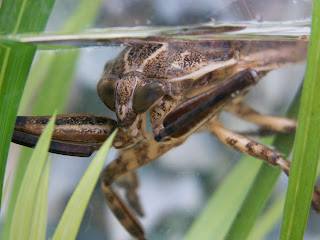This Kat thus turns her attention to another type of meat substitute that has the potential to meet this challenge: edible insects.
As highlighted in a UN Food and Agriculture Organization (FAO) report in 2013, insect eating (entophagy) has many potential benefits, both for the individual and society. Insects have a high protein content, equivalent to that of meat. Cockroaches are particularly protein rich with Periplaneta americana (American cockroach) containing 65% (dry weight) protein (Rumpold et al.). Certain insect species are also high in unsaturated fatty acids, vitamins and minerals.
Additionally, insect husbandry requires significantly less resources that conventional livestock farming. Insects, being smaller than cows, pigs and chickens, require less land, water and feed per gram of animal protein produced. The higher feed conversion efficiency of insects is at least partly due to the fact that insects, as cold-blooded organisms, expend less energy on keeping warm. According to the 2013 FAO report, the feed conversion of the house cricket (A. domestica) is four times higher than pigs and more than twelve times higher than cattle. Insects also produce fewer greenhouse gases than conventional livestock. Pigs, for example, produce up to 100 times more greenhouse gas emissions per kg body weight than mealworms.
Insects have therefore been proposed as a clear solution to global malnutrition and food insecurity issues.
Overcoming the creep factor
Entomophagy is not a new phenomena. People have have been eating insects for millennia, with evidence of human insectivory dating back to 9000-3000 BC (Kouřimská et al.). Today insects are commonly eaten across Africa, Asian and South America. In Asia, moth larvae, crickets, moth pupae, beetles and dragonflies are considered dietary stables, whilst in Thailand, deep fried giant water bugs (Maeng da) are a particular delicacy.
 |
| Giant water bug - A Thai delicacy |
The FAO report on edible insects hypothesizes that Western society's general disgust at the thought of eating insects may be due to an (unjustified) belief that eating insects is the last resort of the starving. Insects are not as prevalent in Europe as in more tropical climbs, and Europe has thus historically relied on agriculture for food. Regardless of the cause, insects are considered far from palatable to the modern day Western consumer.
Never-the-less, recent years have seen the emergence of a swarm of edible insect brands. So how are these edible insects being marketed to Western consumers?
Start-ups providing insect based food predominantly seem to be targeting the "adventurous foodie" and "health conscious" market. Eat grub, a UK start-up selling cricket flour containing cereal bars and whole roasted crickets, targets itself at "foodies and adventurers", and pushes the superfood aspect of insects ("the original superfood"). International edible insect suppliers Crunchy Critters, invite customers to "face the fear" and "forge the fashion". As an insect eater, you will be a dare-devil trend setter! Horizon Edible Insects focuses more on the environmental and nutritional benefits of insects.
Very few edible insect brands focus on the aesthetics of insects. Horizon Edible Insects does include in their reasons to eat insects, that they are "delicious" and considered delicacies in other parts of the world. However, most edible insect suppliers provide only flavored products (e.g. BBQ), as opposed to promoting the natural flavor of the insects themselves. On the other hand, insects have also been marketed as unusual delicacies in high-end restaurants. In 2015 diners at "The World's Best Restaurant" Noma, for example, were served a starter of shrimp topped with live ants.
Innovation in the field of edible insects
Another approach to introducing insects into the Western diet, is to process insects into an unrecognisable form. Whole insects can be roasted and ground to produce dry protein flours. These flours can then be used to make or fortify existing foods. Insect flour can easily be incorporated into conventional products, such as crisps (e.g. cricket crisps "chirps"), pasta and even cocktail bitters. A particular area of innovation has therefore been insect processing methods. There are also a number of companies innovating in the area of expanding the functionality of insect proteins, so that they can be used as substitutes for meat, dairy and eggs. Furthermore, considerable developments in insect farming techniques will be required if insects are to compete with conventional foodstuffs in terms of scale and breadth of use. |
| Ahead of the curve |
French based Ynsect is a leader in insect farming innovation. They have pending patent applications relating to, for example, rearing insects using gel as a source of water (WO2018134524) and insect farms (EP3282837). Cambridge (UK) based biotech Entomics Biosystems ("powering the insect revolution") have developed an insect farming method using waste food as the insect feed-stock.
Many Western consumers may still find the prospect of eating insects unpalatable. However, insect products can also be useful as food for traditional life-stock. Entomics Biosystem, for example, have a pending patent application directed at fermenting insects to produce feedstock, whilst Chinese based Bioforte Biotech has an application for animal food fortified with insect eggs (EP3378328).
It will be fascinating to see how the field of edible insects develops over the coming decade, in terms of both branding and technology. Will savvy branding allow insects to become staple of the Western diet? Will innovations in insect farming enable entophagy to become the panacea for global malnutrition? We can but wait and see. In the meantime, why not progress from the fake insects of Halloween to real chocolate covered locusts this Christmas?
Author: Rose Hughes





0 Comments